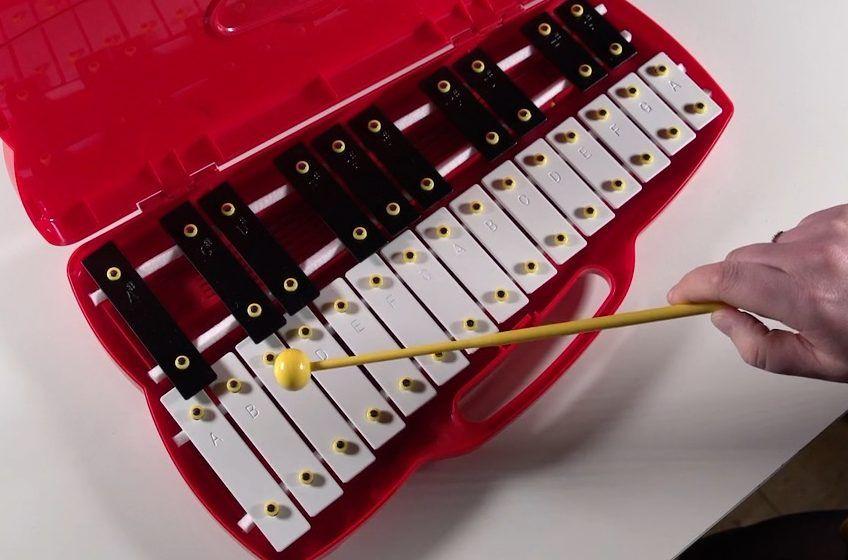Learning objective
- To understand the main features of calypso music.
Success criteria
- I can discuss the origins of the calypso tradition.
- I can name the key features of calypso music.
- I can perform a calypso song.
National curriculum
Music
Pupils should be taught to:
- Play and perform in solo and ensemble contexts, using their voices (and playing musical instruments) with increasing accuracy, fluency, control and expression.
- Listen with attention to detail and recall sounds with increasing aural memory.
- Appreciate and understand a wide range of high-quality live and recorded music drawn from different traditions and from great composers and musicians.
- Develop an understanding of the history of music.
Cross-curricular links
British values
- Individual liberty.
- Mutual respect.
See Promoting fundamental British values as part of SMSC in schools (non-statutory advice) – contains public sector information licensed under the Open Government Licence v2.0.
Before the lesson
Check all images, videos, links and presentation slides are suitable for your class.
- Presentation: What is calypso?
- Link: Assessment: Music KS2: Instrumental: Caribbean (optional – see Attention grabber).
- Link: 'Calypso Rose' by Calypso Queen on VideoLink*.
- Link: 'London Is the Place For Me' by Lord Kitchener on VideoLink*.
* These are external websites and we do not have control over their content – please check before showing them to the children.
Print in advance of the lesson.
The Knowledge organiser provides a visual summary of the key facts and vocabulary for the unit. The children can use it throughout the unit to check keyword meanings or spellings and to help them remember important information when completing an activity. Find further ideas for using the Knowledge organiser to support adaptive teaching here.
If you know a child has specific issues, consider discussing the lesson with them in advance and adapting it as needed. They might benefit from adult support. If problems emerge during the lesson, consult your Senior Leadership Team. It is the teacher’s responsibility to check all resources and lesson content to ensure it is suitable for their class setting.
Sensitivities
Before teaching this unit, consider whether any children have family or cultural connections with the Caribbean.
- When discussing cultural connections, be mindful that some pupils may feel proud to share their heritage, while others may prefer not to talk about personal or family backgrounds.
- Avoid making assumptions based on appearance or names. Frame questions in an open and inclusive way.
- Use the discussion to celebrate the diversity within the classroom and to build understanding of the Caribbean’s cultural richness, especially in relation to musical styles like calypso.
Lesson plan
1: Recap and recall
Before starting this unit, check that the children can recall:
- Vocabulary used to describe music, such as rhythm and pitch.
- Vocabulary used to describe musical symbols such as notes, quavers and crochets.
- Music from different times and parts of the world has different features.
2: Attention grabber
Optional: provide each child with a copy of the Knowledge catcher (see link: Assessment: Music KS2: Instrumental: Caribbean) and ask them to complete it to the best of their ability. Explain that at the end of the unit, they will revisit it, adding more information in a different colour.
Play the link: 'Calypso Rose' by Calypso Queen on VideoLink. Talk to the children about what they saw and heard.
Ask them:
- What is the song about? (Being the best calypso singer and the queen of calypso.)
- How does the music make you feel?
- Why does it make you feel that way?
- Where in the world do you think the song is from? (Trinidad in the Caribbean.)
- What kind of music is this? (Calypso.)
3: Main event
Explain to the children that calypso music originated in Trinidad and was influenced by the music of the West African enslaved people trafficked to the Caribbean. Inform them that they will learn more about calypso music and learn to sing, play and improvise in a calypso style!
Display slides 1 and 2 of the Presentation: What is calypso? Discuss the historical origins and spread of this musical tradition.
Presentation: What is calypso?
Share examples of calipso names and ask the children what their calipso names would be. Allow time for paired discussion and take feedback.
Show slide 3 and explain that the 1920s and 1930s are known as a golden age for calypso music, when the first recordings were produced. Ask the children if they would listen to the news if it were set to funky music.
Proceed to slide 4 and play the song ‘London Is the Place For Me’ by Lord Kitchener, an example of calypso music. Ask the children:
- Do you recognise this song? (The children may recognise it from Paddington the Movie, though this is not where the song originated.)
- What do you notice about this style of music? (Encourage them to consider the rhythms, structure, etc.)
- Do you have family connections with the Caribbean? (Exercise caution when asking this question, see Cautions.)
- Why is race important to calypsonians? (It expresses Afro-Caribbean identity and resistance.)
Show slide 5, which lists some features of calypso. Explain that the children will learn more about these different musical features in each unit lesson.
4: Wrapping up
Display slide 6 of the Presentation: What is calypso?
Presentation: What is calypso?
Explain that it shows the vocal part for a calypso-style song (called ‘What’s the Story?’) that the children will learn throughout this unit. Click to play the guide track audio and follow along with the lyrics displayed on the presentation to familiarise the children with the song (see the Teacher video: What is calypso).
Ask the children:
- What time signature is calypso music usually in? (4/4, shown on the score.)
- What type of rhythms would we hear in calypso music? (Syncopated rhythms.)
- What topics do calypso songs usually cover? (The news; the lyrics of this song are all about the news.)
- Can you name some famous calypso musicians? (Calypso Rose, Lord Invader, Growling Tiger, Mighty Terror.)
- Where does calypso music come from? (Trinidad in the Caribbean.)
- What music did calypso develop out of? (Kaiso – the music of West African enslaved people.)
Extended-mode explainer videos
How to extend your display to view the lesson page and preseantion mode simultaneously. Choose your operating system below to watch the video
If you need further support with extending your display,
please contact [email protected].
Extended-mode explainer video: For Mac
Extended-mode explainer video: For Windows
Adaptive teaching
Pupils needing extra support
Could pair with a more confident talk partner for the questions; could be placed near more confident singers for the singing.
Pupils working at greater depth
Should be encouraged to justify their answers with more depth; could conduct the singing by showing everyone else when to start and stop.
Assessing progress and understanding
Pupils with secure understanding indicated by: naming some of the key features of calypso music; singing along with the song by the end of the lesson.
Pupils working at greater depth indicated by: justifying their answers with greater depth; singing the song accurately by the end of the lesson.
Vocabulary definitions
-
calypso
Music originally from Trinidad in the Caribbean, often thought of as carnival music with catchy, syncopated rhythms.
-
calypsonian
A singer or musician who performs calypso music.
-
harmony
When a musician makes up music while they are playing, instead of using written notes.
-
improvisation
When a musician makes up music while they are playing, instead of using written notes.
-
kaiso
Music that tells stories, brought to Trinidad by West African enslaved people.
-
syncopated rhythms
When the music moves ‘off the beat’.
-
trafficked
Being taken from one place to another, often in a secret or illegal way, usually to be treated unfairly or harmed.





